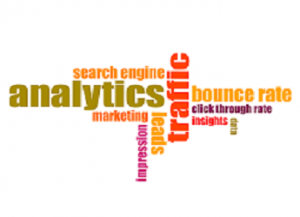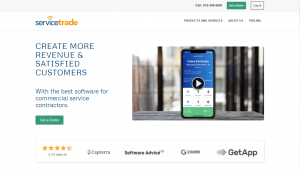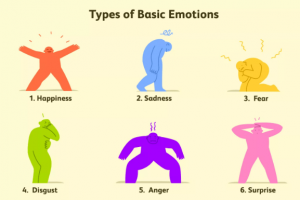In the new analytics landscape, creative execution emerges as the key optimization lever for optimal brand performance and sales.
Traditional strategies for ad campaign optimization are fast becoming obsolete in an AI-driven, privacy-first landscape. Most significantly, we are pivoting from a world of demographic segments to one of dynamic testing — or modeling, as the savvy data community would have it.
The modeling reveals that the most effective way to enhance customer response rates is not in media but in creative data. This surprises most media planners because the creative component is not typically seen as the key variable.
Media plans are largely built to ensure creative content effectively reaches the right audience at the right moment. Meanwhile, the media planner cuts out the creative versions with the lowest response rate.
In the new analytics landscape, creative execution emerges as the critical optimization lever. And when the most valuable insights come from finding an optimal combination of message, audience and timing, we have to work in new ways to flex the creative messaging to yield optimal brand performance and sales.
The myopic channel focus of media agencies
Many would argue that the much-bemoaned chasm between media agencies and creatives in the major European and U.S. markets stems from when media departments were split into separate companies from the large creative ad agencies in the 1990s.
This transformation has brutally stifled collaboration and left creative teams feeling frustrated by the absence of data to explain the impact of their efforts. Media reports have always offered minimal insights into the role of creative performance. Not much has changed in recent years to deepen our understanding of which creative elements work best and why.
This oversimplification of the contribution of creative results in campaign insights, which are often misleading or potentially even incorrect. For example, there are instances when a display publisher ad placement has been identified as no longer performing well, and the drop-off has been attributed to poor audience targeting or an ineffective bidding strategy. But the actual reason was that the same creative had been used for over six months and simply no longer resonated.
Likewise, a video creative test has been deemed ineffective due to low completion rates. However, the real reason was that it was targeted to the wrong audience, and the A/B test was not correctly configured within the buying platform.
Fully realizing the power of creative assets
In essence, a deeper understanding of the dynamics between creative work and its media environment enables the refinement and enhancement of ads, as the true causes of effectiveness are captured.
Creative analytics achieves this by integrating audience and creative data so that they are analyzed and measured in conjunction rather than in isolation. The lens of creative and audience combinations gives us a much deeper understanding of what truly drives engagement or sales, providing the insights needed for a more actionable and scalable testing roadmap.
Supporting this, AI helps us with scaling these tests and spotting patterns that the planner cannot see. We can look at comprehensive campaign performance insights across channels by automating reports on diverse creative elements and scoring their resonance with specific audience segments. The findings can be across product portfolios and markets, enabling brands to harness the value of every advertising asset.
Think of the waste when teams across similar European markets are selling identical products within families of brands and planning their campaigns in isolation. A data-driven approach empowers creatives with enhanced control, enabling them to understand, refine, and elevate their work comprehensively.
So, how does it work in practice?
It is vital to structure your marketing campaigns so that combined creative and audience insights can be generated. Foundational requirements include:
- Setting up individual line items for each audience/creative combination.
- Having a robust governance structure to precisely define which audience is being targeted with which particular creative.
Setting up the right technical infrastructure to automatically share these insights with everyone involved reduces the need for manual reporting. This frees up analysts’ time to focus on planning future tests.
For example, planners must consider validating which creative variant works best with a high-value audience segment before running a robust test. They should set up their tests with care to isolate the performance of different format sizes and identify which provides the best engagement metrics for further creative personalization.
Most importantly, there must be a clearly defined framework between the client, media agency and creative agency around an agreed set of KPIs, leveraging the controlled datasets to make informed planning decisions around audience and creative activations. Without close collaboration between all three groups throughout the campaign lifecycle, truly effective creative analytics will not be possible.
A test-and-learn approach offers brands an optimal path to comprehend how creative messaging influences target audiences fully. These insights must be delivered through a bespoke platform and collaboratively developed with input from creative and delivery teams, ensuring precise campaign reporting and real-time access to performance data.
These steps enable swift, informed decisions for creative and marketing teams. Marketers gain actionable insights by analyzing the interplay between creative elements and audience targeting, establishing a constant feedback loop that continually enhances creative and optimizes campaigns.
Case study: Demonstrating the power of creative analytics
We have worked with a number of leading brands to help them leverage their existing tech stack to gain deeper insights into their campaigns, fueling creative enhancements and achieving outstanding results across diverse markets.
We are working with a global leader in the healthcare sector to transform their precision marketing program through the innovative use of creative analytics. The collaboration led to developing a cloud-based reporting solution powered by Google’s AI-driven toolset.
The solution streamlines campaign reporting and provides real-time access to creative insight. It combines marketing performance data with specific audiences and visualizations of the creatives running within their business intelligence solution. This enables creative, media and marketing teams to make informed, collaborative decisions around digital strategy and planning.
One insight generated from this tool involved the delivery of personalized messaging. Our goal was to measure the incremental performance uplift of personalized creative targeting while accounting for the additional costs required to produce multiple variants globally.
By curating specific marketing tests across different combinations of personalized and generic audiences and creatives, we could:
- Clearly demonstrate that personalized assets were more efficient.
- Pinpoint the timing for when it was most appropriate to adopt this tactic within the market’s spend volumes and digital strategy.
The results
Within one market, we saw that combining personalized audiences and creatives generated a 640% uplift in performance versus an 11% increase in cost, which was a fantastic validation of the client’s digital strategy and our approach to tackling this challenge.
Overall, the measurement program has empowered the client with invaluable insights, bridging the gap between media and creative. It facilitates efficient cross-market learning by sharing success stories and failures, enabling teams to adopt strategies that yield optimal results.
The platform’s comprehensive dashboards offer global insights into precision marketing adoption, creative effectiveness, and additional performance metrics while reducing agency reporting time significantly.
As this company expands the platform’s capabilities by integrating more markets and data sources, it is poised to become an all-encompassing media marketing and analytics hub. All thanks to creative analytics.
Deeper collaboration for deeper insights
We are in the foothills of the potential for creative analytics to revolutionize digital marketing campaign success. As brands embrace this transformative approach, we can move from a narrow channel-focused strategy to precise audience targeting and resonating messages.
Creative analytics bridges the gap between artistic vision and data-driven decisions. Let’s embrace the art and science of digital marketing.
The post Mastering the art and science of creative analytics appeared first on MarTech.
MarTech(11)
Report Post





